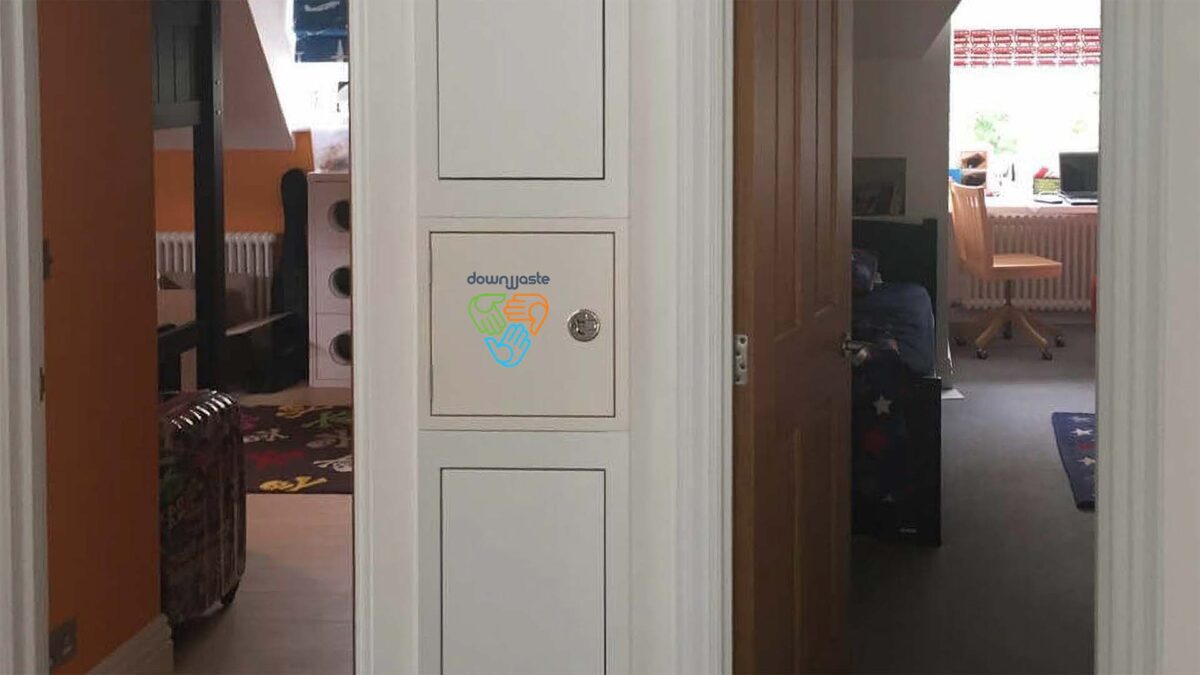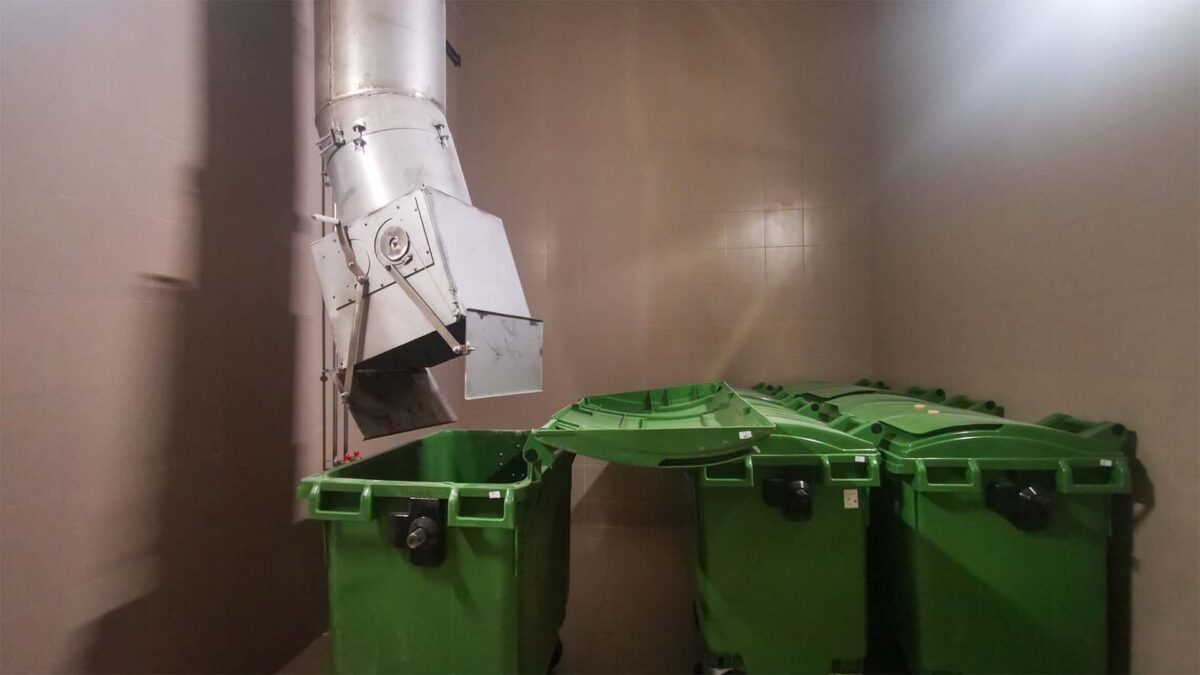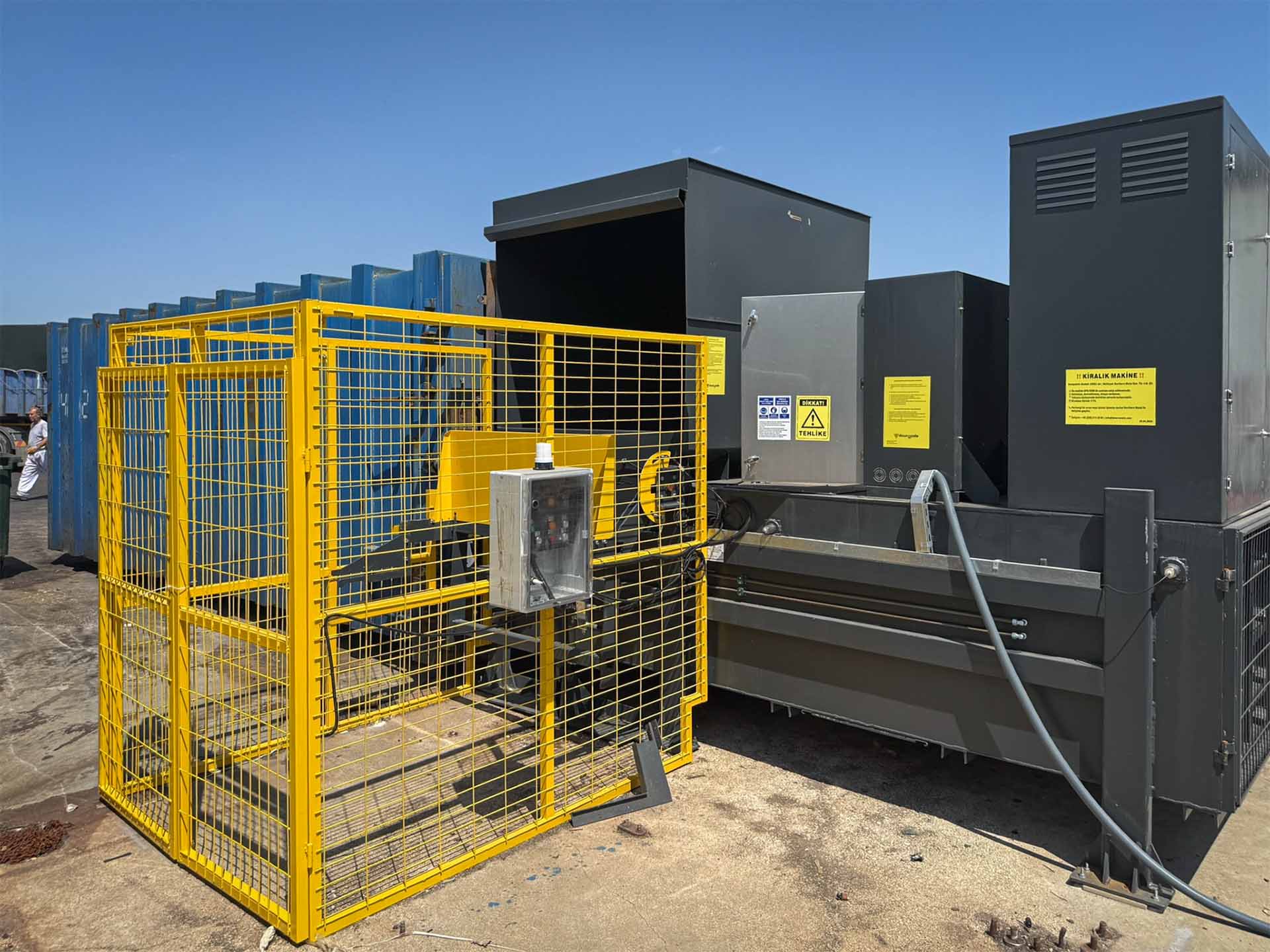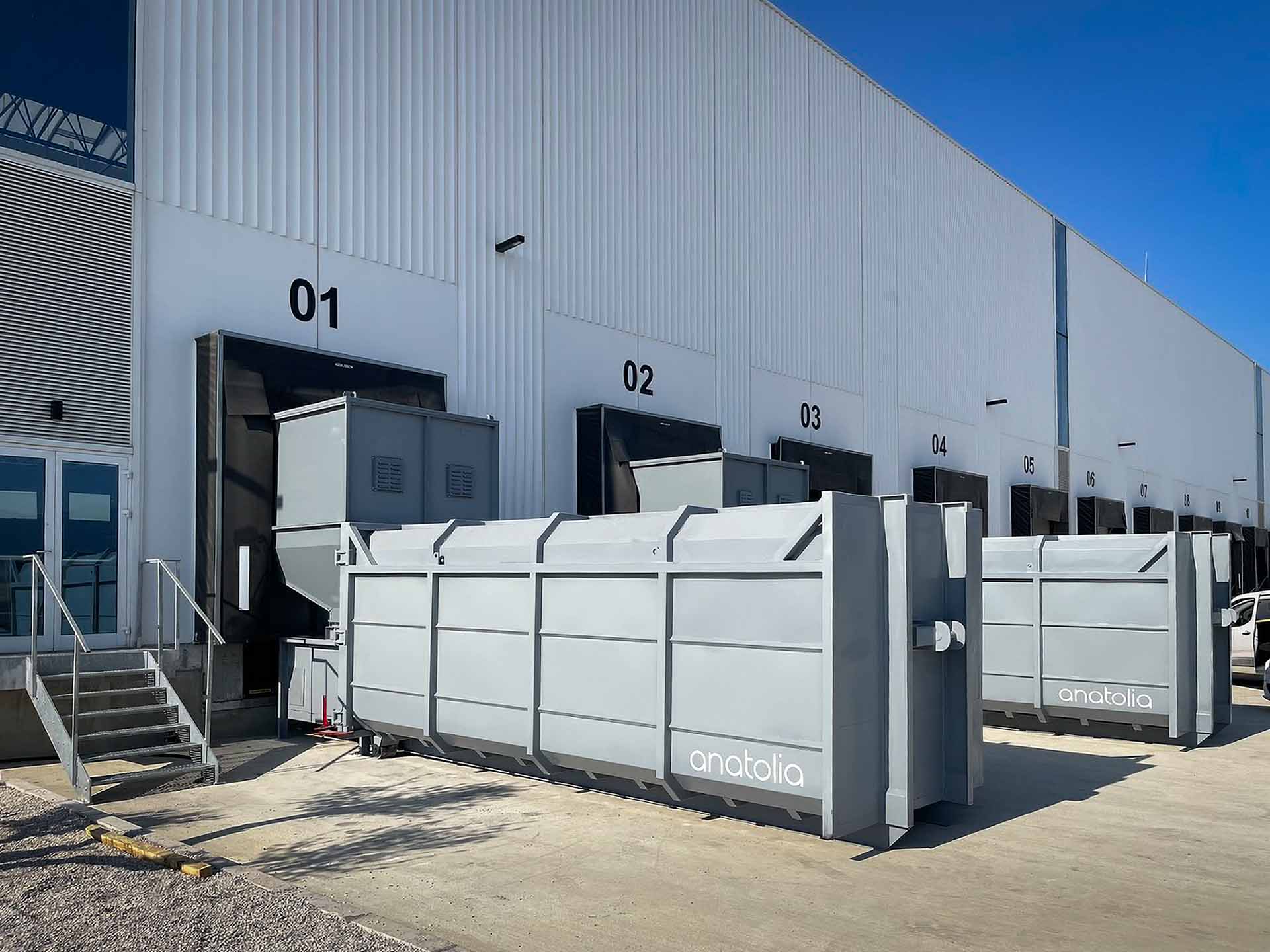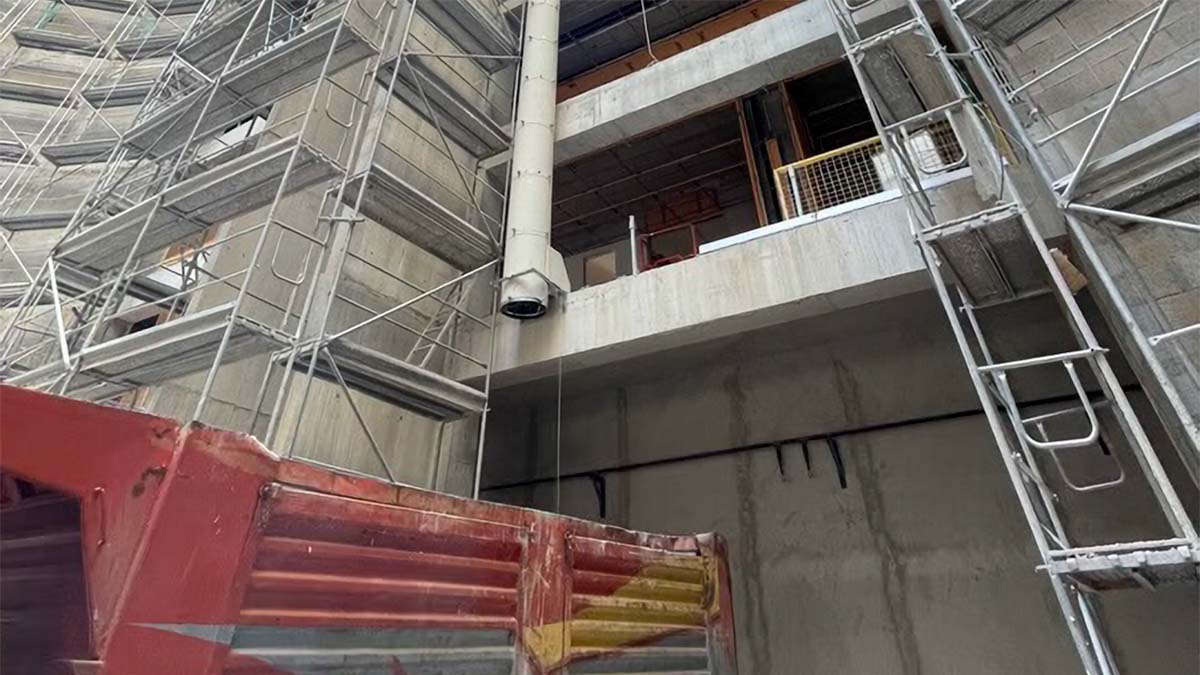
In the bustling world of construction, safety and efficiency are two paramount concerns that command the attention of every prudent site manager. Amidst the myriad of tools and techniques available to enhance these aspects, one often overlooked yet highly effective solution lies in the humble debris chute. This seemingly simple device comes incredibly for bringing significant amounts of waste generated in the site down easily and safely.
The purpose of this essay is to shed light on the importance of trash chutes in construction sites, elucidating how they contribute to a safer, more streamlined working environment. By delving into their functional benefits and practical applications, we aim to underscore their indispensable role in modern multi-storey construction practices.
- Introduction to Trash Chutes: A New Era in Construction Safety and Efficiency
- The Role of Trash Chutes in Enhancing Construction Site Safety
- Boosting Operational Efficiency with Trash Chutes: A Closer Look
- Case Studies: Real-world Applications of Trash Chutes in Construction Sites
- Conclusion: Embracing the Transformative Power of Trash Chute
Introduction to Metal Debris Chutes: A New Standard in Construction Safety and Efficiency
In the ever-evolving sphere of construction, the trash chute protects its fundamental position. This seemingly rudimentary tool hanging from the exterior of the structure play the most important role in the waste management processes. The concept of the trash chute is straightforward, yet its impact is profound. It is essentially a vertical passage utilized in buildings under construction to expediently transport waste from upper levels to a central collection point at the ground level. This eliminates the need for labor-intensive, time-consuming manual waste transportation, thereby enhancing operational efficiency.
Moreover, the advent of trash chutes has significantly bolstered safety measures on construction sites. By confining debris within a secure conduit, it mitigates the risk of accidents caused by falling objects. In addition, it reduces the exposure of workers to potentially hazardous materials, contributing to a healthier work environment.
The use of trash chutes also aligns with the growing emphasis on sustainable practices in the construction industry. Efficient waste management facilitated by these chutes enables more effective recycling and disposal strategies, minimizing the environmental impact of construction activities.
Indeed, the introduction of trash chutes marks a significant stride forward in the realms of construction safety and efficiency.
The Role of Trash Chutes in Enhancing Construction Site Safety
The importance of safety in the construction industry cannot be overstated. With the advent of trash chutes, a significant stride has been made in the direction of enhancing site safety. Their role in reducing accidents and potential hazards is indeed commendable.
Firstly, trash chutes help in managing waste effectively and safely. Construction sites generate an immense amount of debris daily. Without a proper system in place, this waste can become a breeding ground for accidents. Trash chutes offer a streamlined way to dispose of this waste, thereby minimizing the risk of mishaps.
Secondly, these chutes also play a crucial role in reducing the exposure of workers to potentially hazardous materials. Construction waste often comprises sharp objects, heavy items, and chemical substances that pose considerable danger. By confining such waste within a secure conduit, trash chutes ensure that laborers are less likely to come into contact with these harmful elements.
Thirdly, by eliminating manual waste transportation, trash chutes reduce the risk of injuries caused by physical strain. Carrying heavy loads of debris can lead to musculoskeletal disorders among workers. This innovative tool saves workers from such strenuous tasks, thereby promoting their health and well-being.
Finally, the use of trash chutes minimizes the risk of accidents caused by falling debris. In high-rise constructions, there’s always a chance of objects falling from upper levels. A chute securely transports waste from the top to the bottom, mitigating the risk of injury from falling objects.
In conclusion, trash chutes have emerged as a critical component in enhancing construction site safety. They not only streamline waste management but also protect workers from potential hazards, making them an indispensable tool in modern construction practices.
Boosting Operational Efficiency with Trash Chutes: A Closer Look
In the fast-paced world of construction, efficiency is key. An efficient site is not only more productive but also more profitable. Herein lies the value of trash chutes; they are not just safety tools, but powerful drivers of operational efficiency.
The first point to consider is the time-saving aspect of using trash chutes. Without them, workers must spend valuable time transporting waste from different levels of a building to the ground. This task is not only physically demanding but also incredibly time-consuming. With a trash chute in place, debris can be disposed of quickly and easily, freeing up workers to focus on other crucial tasks.
Secondly, trash chutes contribute to a cleaner and more organized construction site. By providing a dedicated pathway for different streams of waste, they prevent the accumulation of debris in work areas and play a vital role in waste management practices. This leads to a more streamlined operation, as workers do not have to navigate around piles of waste or clean up before starting their tasks.
In conclusion, trash chutes offer numerous benefits that boost operational efficiency. From saving time and reducing labor needs to improving site cleanliness and enhancing reputation, these tools can significantly contribute to a construction firm’s success.
Case Studies: Real-world Applications of Trash Chutes in Construction Sites and its Problems
Across the globe, construction sites are leveraging the power of trash chutes to enhance safety and efficiency. These real-world applications provide concrete evidence of the benefits these tools can bring.
In a high-rise construction project in New York City, a trash chute system was implemented right from the start. The result was a significant reduction in waste-related accidents and an increase in productivity. Workers were able to dispose of debris quickly without having to navigate down multiple flights of stairs, reducing the risk of injury and saving time. However, these chutes if not designed and insulated properly can make a sound pollution that is most disturbing for the neighbourhood. Downwaste applies a 10mm 300kg/m3 density plaster to exterior of the chutes to combat the sound.
Meanwhile, on a renovation project in London, a softcase temporary trash chute was installed. This allowed for efficient disposal of old materials without having to carry them by hand or throwing out of the balcony which is forbidden.
A large-scale commercial construction site in Tokyo saw similar benefits when they opted to use a trash chute system. With the site spanning several acres, waste management could have been a logistical nightmare. However, the trash chute made it easy to transport waste from various points to a central location, streamlining operations and keeping the site clean.
In Sydney, a residential building project used a trash chute system not just for efficiency, but also for environmental sustainability. By multiple debris chutes at a time according to the waste management regulations, proper waste segregation and disposal was enabled. They were able to minimize the mixing of waste in the construction. This case demonstrates that trash chutes can also contribute to green construction practices.
Lastly, the construction companies in Dubai incorporated debris chutes into their standard operating procedures reported fewer injuries, faster project completion times, and lower labor costs – all contributing to higher profitability.
Conclusion: Vital Role of Construction Debris Chutes
In the realm of construction, where safety and efficiency are paramount, debris chutes have emerged as a powerful tool. They have proven their worth in diverse settings, from towering high-rises to sprawling commercial sites, transforming the way waste is managed on construction sites. However, if the suitable high quality materials are not used, these chutes can pose a significant risk at site. It is important to note increased cases of broken inlets in HDPE debris chutes bring more risk than safety to construction zones.
The benefits of metal sound insulated debris chutes are manifold. Not only do they enhance safety by reducing the risk of waste-related accidents, but they also boost operational efficiency. By enabling quick and easy disposal of debris, they save workers’ time and effort, allowing them to focus on other critical tasks. This, in turn, can expedite project timelines and reduce labor costs, contributing to higher profitability.
Moreover, cost effective metal construction debris chutes(costs around 250 USD per floor/chute) have shown potential in promoting environmental sustainability in construction practices. By ensuring proper waste segregation and disposal, they can help minimize the environmental impact of construction projects. This is particularly relevant in today’s world, where there is growing emphasis on green construction and sustainable practices.
Embracing metal debris chutes thus seems like a logical step forward for the construction industry. As more and more sites around the world adopt these systems, the future of construction waste management lies in harnessing the power of these simple, yet effective tools.

